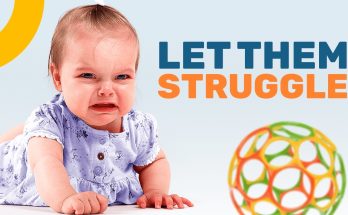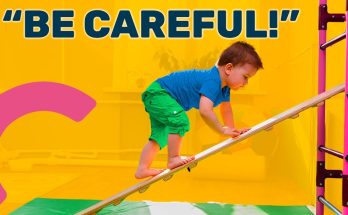A baby’s laugh is one of the most heartwarming sounds a parent or caregiver can hear. It’s pure, untainted joy, and it can instantly brighten the darkest of days. The development of a baby’s laugh is an important milestone, marking a shift from non-verbal communication to one of the earliest forms of social interaction. But what makes a baby’s laugh so adorable? And how can parents help foster this joyful expression? In this article, we’ll explore why babies have such adorable laughs, how they develop them, and ways to encourage this wonderful milestone.
The Science Behind a Baby’s Laugh
A baby’s laugh is not only endearing but also deeply rooted in their development. From a scientific standpoint, a baby’s laugh is a combination of neurological and emotional factors. At birth, babies have limited control over their physical responses, but as they grow, they begin to experiment with sounds and develop the ability to laugh, usually around the age of 3 to 4 months.
Babies start by making gurgling and cooing sounds, which evolve into laughter as their motor skills improve and they learn how to control their facial muscles. These early laughs are often spontaneous and can be triggered by anything from a funny noise to the sight of a familiar face. The timing of a baby’s laugh is usually aligned with their developing sense of social connection—babies tend to laugh when they feel safe, loved, and engaged with their caregivers.
The sound of a baby’s laugh is distinct due to its high-pitched tone, which is a characteristic of the baby’s developing vocal cords. Babies also tend to laugh more freely and frequently than adults. Their laughter is simple and unpretentious, with an innocence that is irresistible.
Why Babies’ Laughs Are So Adorable
Several factors contribute to the universal appeal of a baby’s laugh. First and foremost, the sound of a baby laughing triggers a positive emotional response in adults. Babies laugh in a way that communicates trust, joy, and comfort. Their laugh is often spontaneous, unfiltered, and free from social pressures, which makes it seem more authentic and genuine.
One reason for this is that the high-pitched sound of a baby’s laugh activates a part of the brain associated with caregiving and affection. This is why adults often find themselves grinning or even laughing along when they hear a baby’s laugh. It taps into our instincts as caregivers and helps foster a sense of connection between parents and their infants. The contagious nature of a baby’s laugh is not only charming but serves as a bonding tool, encouraging social interaction and attachment.
Moreover, babies have an infectious enthusiasm that makes their laughter so special. They laugh with abandon, and their joy is unrestrained. Unlike adults who may filter their laughter based on social norms or situations, babies laugh freely and often, making their joy seem even more precious. Parents, too, enjoy hearing their babies laugh because it signals their emotional and social development, as laughter is a key milestone in infancy.
When Do Babies Start Laughing?
Most babies start to laugh around 3 to 4 months of age, although the exact timing can vary. Early on, babies engage in social smiles, which are brief, spontaneous facial expressions in response to familiar faces or pleasant stimuli. These early smiles can evolve into laughter as babies begin to learn more about their environment and the people around them.
At this stage, laughter is often a response to physical or playful stimuli. For instance, babies may laugh when they are gently tickled, when they see a parent make funny faces, or when they experience something surprising or new. By the age of 6 months, many babies begin to laugh in response to playful interaction or simple humor, like peekaboo games.
By the time babies reach 9 to 12 months, their laughter tends to become more deliberate and social. They begin to understand that their laughter elicits reactions from others, and they start to enjoy making others laugh as well. This is an exciting developmental milestone because it shows the baby’s growing awareness of social interactions and the role of laughter in communication.
How to Encourage Your Baby to Laugh
If you’re eager to hear your baby’s adorable laugh, there are many fun and simple activities you can do to encourage this milestone. Here are a few tips to help foster your baby’s laughter:
1. Play Peekaboo
Peekaboo is a classic game that never fails to make babies laugh. The element of surprise, combined with the interaction with a loved one, creates a perfect environment for laughter. The excitement of seeing someone reappear after disappearing behind your hands or a cloth can make your baby giggle with delight.
2. Use Funny Sounds
Babies are highly responsive to sounds, so making funny noises or silly voices is a surefire way to provoke laughter. Whether it’s a high-pitched “Ooooh!” or an exaggerated “Boo!”, babies are likely to react with laughter to sounds that are playful or unexpected.
3. Tickle Gently
Tickling is one of the most well-known ways to make a baby laugh. Gently tickling your baby’s feet, belly, or underarms can trigger the kind of uncontrollable giggles that make your heart melt. However, it’s important to watch your baby’s cues. If they seem uncomfortable or stop laughing, it’s time to stop.
4. Make Funny Faces
Babies love looking at faces, and making funny expressions is an excellent way to get a laugh. Stick out your tongue, puff out your cheeks, or cross your eyes—your baby will likely be delighted by the exaggerated expressions and may respond with laughter.
5. Play with Sensory Stimulation
Sensory experiences, such as gentle tickling, blowing raspberries on your baby’s tummy, or playing with bubbles, can encourage laughter. Babies are highly sensitive to touch, sight, and sound, so providing sensory experiences that are playful can stimulate giggles.
6. Mirror Play
Babies enjoy looking at faces, especially their caregiver’s. Holding a mirror up to your baby and making silly faces can engage them, and they might even try to imitate your expressions. This form of interaction fosters laughter and social bonding.
7. Engage in Social Interaction
Babies are highly attuned to the emotions of their caregivers. Engaging with your baby in a playful manner, making eye contact, and using warm, joyful tones will help them feel secure and happy, which may lead to more spontaneous laughter.
The Importance of Laughter in Infant Development
Laughter is not just a sign of joy; it plays a crucial role in a baby’s development. As babies begin to laugh, they are also learning about social cues, bonding with their caregivers, and developing their sense of humor. Laughter fosters emotional and cognitive growth, and it strengthens the parent-child bond.
Furthermore, laughter is linked to the development of social skills. When babies laugh in response to social interactions, they are learning the power of communication and the importance of shared joy. These early experiences help lay the foundation for more complex social and emotional development in the future.
Conclusion
A baby’s laugh is a precious gift, one that brings joy not only to the baby but also to everyone around them. The adorable nature of a baby’s laugh can melt the hearts of parents, family members, and friends, and it symbolizes the deep emotional connection between the child and their caregivers. As babies grow, they learn to use laughter as a tool for communication, socialization, and emotional expression. By engaging in playful activities and fostering an environment filled with love and joy, parents can help their babies develop this beautiful and infectious sound. In the end, a baby’s laugh is not just cute—it’s a sign of growth, connection, and happiness that will continue to bring smiles as they develop further.



